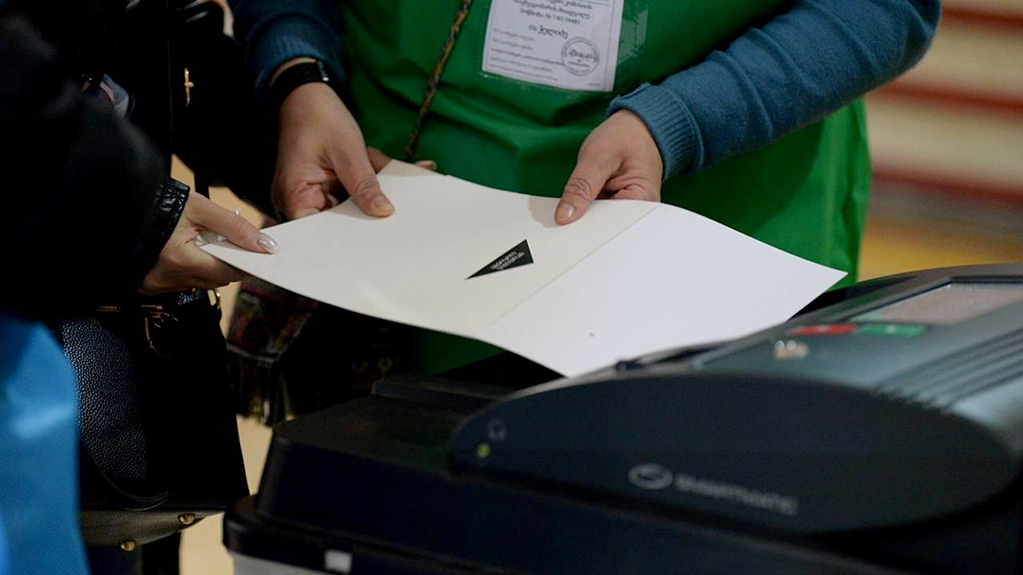Nona Kurdovanidze, the chairperson of the Georgian Young Lawyers' Association, explained why her organization is requesting the annulment of the results from 2,263 election precincts.
News
Trending stories
- 1 Geostat: The Average Salary in Georgia Is 2,271 GEL
- 2 Kobakhidze and Putin Attend International Forum on Neutrality in Turkmenistan
- 3 Electricity Prices Rising – GNERC to Announce New Tariffs in Late December
- 4 U.S. Sanctions International Criminal Court Judge Gocha Lordkipanidze
- 5 Georgia to Allow One-Time Free Transit of Azerbaijani Fuel to Armenia
- 6 Driving Licenses to Be Restored for Over 18,000 Drivers Revoked for Alcohol Offences
As she said, there were both systematic and individual violations of the principle of voting secrecy. In some instances, voters entering the booth were able to control their choices, voters themselves revealed their choices, or commission members took the ballots, opened the frame envelopes, and saw the choices. If such violations were not widespread, observers would not have requested the annulment of the district results.
"A breach of confidentiality occurs when the election infrastructure cannot systematically ensure confidentiality. GYLA’s approach is as follows: individual cases, if not recurring in a specific area or not combined with other violations, do not justify calling for the invalidation of the area’s results.
However, if the breach of secrecy is systemic, the results become null and void regardless of whether all voters' choices have been disclosed, as an election without guaranteed secrecy cannot be considered an election. Secrecy is the core principle of elections.
On election day, as part of our observation mission, we started recording information received from precinct observers in the morning. Throughout the day, we presented individual violations to the public, gradually revealing the scope of the issues and analyzing them. The same occurred regarding vote secrecy. Throughout the day, information came in about cameras in precincts and instances where ballot traces were visible on the other side. At the end of the day, when votes were counted, the accumulated information gave us a clear picture of the systemic issue with vote secrecy, making it one of the three main violation patterns in GYLA’s election day statement. The other two were issues with marking procedures and the creation of a hostile environment for observers," Kurdovanidze noted.
The head of GYLA clarified that the organization had no prior experience litigating systemic vote secrecy violations, which delayed the development of an appropriate strategy.
"Our commitment was to address the systemic issue of privacy violations. However, as our organization had no prior experience in litigating such a widespread breach of confidentiality, we formulated this litigation strategy shortly before the appeal deadline. I understand it is challenging to request the invalidation of 90% of voter ballots over a constitutional secrecy violation. However, ignoring this issue, knowing its magnitude, would be turning a blind eye to the violation of the electoral rights of 90% of the electorate.
We do not claim that anyone in the 2263 precincts where we seek annulment knows each voter’s choice exactly. We argue that the ballot’s colored marking on the reverse side compromised secrecy.
Some argue that if voters correctly placed the ballot in the envelope, the colored back would not have shown. This is incorrect because the ballot does not slip into the machine so slowly that it would not reveal the colored circle as it slides from the envelope. We have proof that after the test circle, a second colored circle (indicating a party choice) is visible upon sliding. Additionally, sometimes the machine does not accept the ballot and returns it, requiring the voter to rescan it. When the ballot is returned, it is no longer in the framed envelope, so whether it was properly enclosed cannot be determined.
We are not disputing whether the CEC purchased 190-gram offset paper or not. We are not paper experts, nor are we marker specialists, and cannot assess whether such materials would violate secrecy. What we do know is that the other side of the ballot showed colored traces, thereby violating the constitution," said Kurdovanidze.
GYLA identified the risks to voting secrecy during training and informational meetings held by the CEC before the elections and appealed to the CEC to take corrective action. In a letter dated September 28, the CEC informed GYLA that the election ballot used in training sessions was a test version, and the quality of the ballot used on voting day would differ to ensure secrecy.















